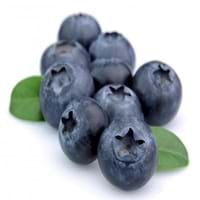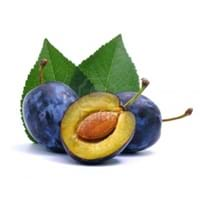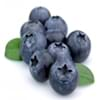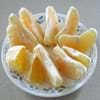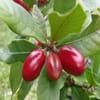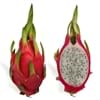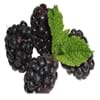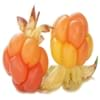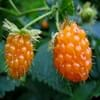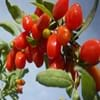Health Benefits
Cancer prevention, Heart care, Increases metabolic rate, Strengthening of bones, Treatment of skin Diseases
Cancer prevention, Cures gastro-intestinal troubles, Heart care, Increase in haemoglobin, Prevents high blood pressure
General Benefits
Anti oxidant properties, Boosts immune system, Digestive aid, Eye care, Improves blood circulation, Sore throat treatment
Anti-inflammatory properties, Boosts immune system, Digestive aid, Eye care, Flu treatment, Helps in weight loss, Maintains healthy cholesterol level, Treatment of common cold
Skin Benefits
Anti-aging benefits, Reduces wrinkles, Skin rejuvenation, Treatment of skin diseases
Anti-aging benefits, Brightens and lightens complexion, Reduces wrinkles, Skin revitalization, Treatment of dark spots
Hair Benefits
Protects hair
Prevents hair loss, Promotes longer and healthier hair, Protects hair, Remedy for split ends, Treatment of dandruff
Allergy Symptoms
Abdominal pains, Coughing, Diarrhea, Itching, Runny nose, Sneezing, Swelling of mouth, tongue or lips, Wheezing
Abdominal pains, Anaphylaxis, Vomiting
Side Effects
Allergic reaction
Allergic reaction
Best Time to Eat
Best if taken as a breakfast (or empty stomach), As a snack in the late afternoon, Don't consume at night and before bed, Eat the fresh ones, avoid mixing with any other foods, don't eat after meal., Morning time (before lunch)
As a snack in the late afternoon, Don't consume at night and before bed, Don't eat after meal, Morning time (before lunch)
Vitamin A (Retinol)
Not Available
Vitamin B5 (Pantothenic Acid)
Not Available
Vitamin B6 (Pyridoxin)
Not Available
Vitamin B9 (Folic acid)
Not Available
Vitamin C (Ascorbic Acid)
Vitamin E (Tocopherole)
Not Available
Vitamin K (Phyllochinone)
Not Available
Lutein+Zeaxanthin
Not Available
Phytosterol
Not Available
Calories in Fresh Fruit with Peel
Calories in Fresh Fruit without Peel
Not Available
Not Available
Calories in Frozen Form
Not Available
Calories in Dried Form
Not Available
Calories in Canned Form
Not Available
Varieties
Dwarf Huckleberry, Cascade Huckleberry, Mountain huckleberry and Blackwinter Huckleberry
Merryweather Damson, Shropshire Prune, President plum, Damson farleigh and Damson langley bullace
Color
Blue, Purple, Purplish black
Dark purple
Inside Color
Purple
Yellow
Taste
Sweet
Juicy, Sweet, Tart
Origin
North America
Syria
Grows on
Not Available
Trees
Soil Type
Loamy, Sandy, Well-drained
Clay, Loam, Moist, Sandy loam, Well-drained
Climatic Conditions
Humid, Warm
Cold
Facts about
- "I'm your huckleberry" is a way of saying that one is just the right person for a given job.
- The phrase "a huckleberry over my persimmon" was used to mean "a bit beyond my abilities".
- The name Damson originates from the original name 'Damacus plum'.
- Damson wine was very popular in 19th century.
- This fruit is often used in jams due to its slightly tart behaviour.
Top Producer
United States of America
United Kingdom
Other Countries
Canada
Ireland, United States of America
Top Importer
Canada
United States of America
Top Exporter
Chile
France
Botanical Name
Gaylussacia brachycera
Prunus domestica subsp. insititia
Synonym
Not Available
Not Available
Subkingdom
Tracheobionta
Tracheobionta
Division
Magnoliophyta
Magnoliophyta
Class
Magnoliopsida
Magnoliopsida
Subclass
Asteridae
Rosidae
Family
Ericaceae
Rosaceae
Species
G. brachycera
Prunus domestica subsp. insititia
Generic Group
Heath
Not Available
Difference Between Huckleberry and Damson
We might think that Huckleberry and Damson are similar with respect to nutritional value and health benefits. But the nutrient content of both fruits is different. Huckleberry and Damson Facts such as their taste, shape, color, and size are also distinct. The difference between Huckleberry and Damson is explained here.
The amount of calories in 100 gm of fresh Huckleberry and Damson with peel is 37.00 kcal and 46.00 kcal and the amount of calories without peel is Not Available and Not Available respectively. Thus, Huckleberry and Damson belong to and category.These fruits might or might not differ with respect to their scientific classification. The order of Huckleberry and Damson is Ericales and Rosales respectively. Huckleberry belongs to Ericaceae family and Damson belongs to Rosaceae family. Huckleberry belongs to Gaylussacia genus of G. brachycera species and Damson belongs to Prunus genus of Prunus domestica subsp. insititia species. Beings plants, both fruits belong to Plantae Kingdom.
